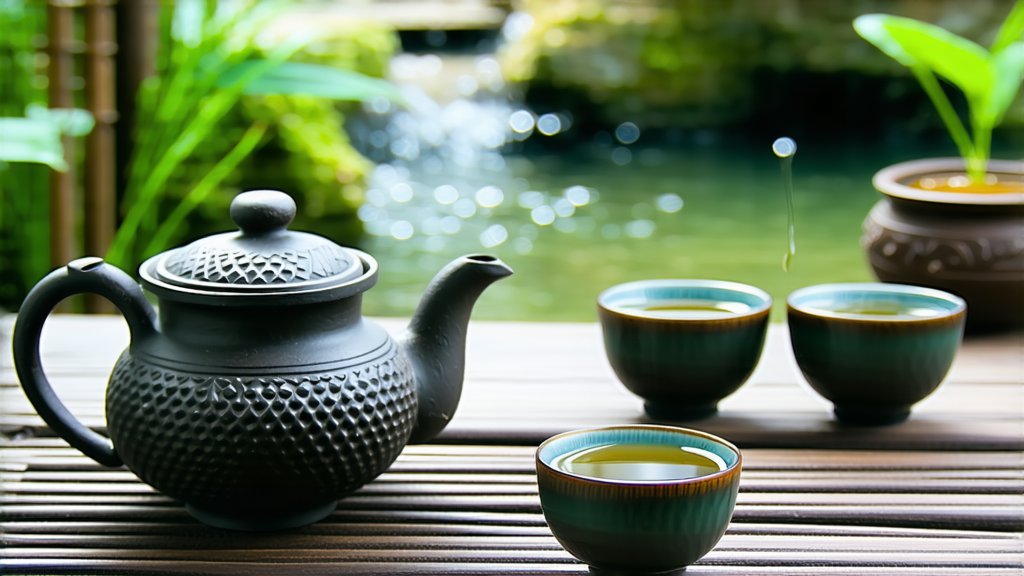
Anhua dark tea, also known as Anhua Hei Cha or simply "Hei Cha," is a unique and revered member of the Chinese black tea family. Originating from the Anhua County in Hunan Province, this tea has carved out its own niche within the vast landscape of Chinese tea culture. Its distinctive flavor profile, health benefits, and intricate production process make it a subject of fascination for tea enthusiasts worldwide. In this article, we delve deep into the history, varieties, production methods, and appreciation techniques of Anhua dark tea, offering an immersive journey into its world.
Historical Context
The origins of Anhua dark tea can be traced back over a thousand years to the Tang Dynasty (618-907 AD). However, it gained prominence during the Ming Dynasty (1368-1644 AD) when it became a staple among the nomadic tribes of China. These tribes discovered that the tea's compressed form and long shelf life made it ideal for long journeys across the Silk Road and through harsh climates. Over time, Anhua dark tea evolved, incorporating unique processing techniques that would become its hallmark.
Varieties of Anhua Dark Tea
Anhua dark tea encompasses several distinct varieties, each with its own characteristics and production methods:
- Hua Guan (花磚茶): Literally translating to "flower brick," Hua Guan is shaped into bricks and features a floral aroma with a smooth taste.
- Qian Li Cha (千兩茶): Also known as "Thousand Tael Tea," Qian Li Cha is traditionally wrapped in bamboo leaves and weighs approximately 3.125 kilograms. It undergoes extensive aging, resulting in a rich, earthy flavor.
- Tianjian Tea (天尖茶): Recognized for its high quality, Tianjian Tea is often enjoyed as a loose leaf tea. It offers a more delicate flavor compared to other Anhua dark teas and is typically aged for shorter periods.
- Gongjian Tea (贡尖茶): Positioned between Tianjian and lower-grade varieties, Gongjian Tea strikes a balance between affordability and quality, making it popular among everyday drinkers.
- Xiaojing Gongfu (小京工夫): This variety is named after its place of production and is known for its fine quality and meticulous craftsmanship.
Production Process: A Labor of Love
The production of Anhua dark tea involves a series of complex steps that contribute to its unique flavor and properties:
- Withering: Fresh tea leaves are spread out to wither under the sun, reducing moisture content and preparing them for further processing.
- Fixation: The withered leaves are then heated to halt oxidation, preserving their green color and locking in their natural flavors.
- Rolling: The fixed leaves are rolled to release juices and shape them into tight rolls or balls.
- Piling Fermentation: Unlike other black teas, Anhua dark tea undergoes a post-fermentation process where the rolled leaves are piled up and left to ferment naturally. This step can last anywhere from several months to several years, allowing beneficial microbes to develop and enhance the tea's flavor profile.
- Drying: After fermentation, the tea is dried to reduce moisture content further, ensuring stability during storage and transportation.
- Aging: Finally, Anhua dark tea is often aged in controlled environments to develop its characteristic depth and complexity. Aging can transform the tea, adding layers of flavor and enhancing its health benefits.
Appreciating Anhua Dark Tea: A Ritual of Experience
To truly appreciate Anhua dark tea, one must engage in a mindful tasting ritual that emphasizes all five senses:
- Visual Appreciation: Observe the dry leaves, noting their size, shape, and color. Well-aged Anhua dark tea often appears darker, with a sheen indicating proper fermentation.
- Aroma: Before brewing, gently warm the teapot and let the dry leaves release their aroma. Anhua dark tea emits earthy, woody scents with hints of fruitiness or spiciness depending on its age and variety.
- Brewing: Use boiling water (around 95°C to 100°C) and a gaiwan or Yixing clay teapot for optimal extraction. Steep the tea for about 30 seconds to 1 minute for the first infusion, adjusting time for subsequent infusions based on personal preference.
- Tasting: Sip slowly, allowing the tea to coat your palate. Notice the initial astringency that gives way to a smooth, lingering finish. Pay attention to the tea's body, texture, and any evolving flavors.
- Aftertaste: Savor the aftertaste, which should reveal nuances of sweetness, spiciness, or even a slight cooling sensation, indicative of high-quality Anhua dark tea.
Health Benefits: More Than Just a Beverage
Beyond its delightful taste, Anhua dark tea boasts numerous health benefits, attributed to its unique processing and aging process:
- Digestive Health: The tea's fermentation process produces beneficial bacteria that aid digestion and promote gut health.
- Weight Management: Regular consumption has been linked to improved metabolism and weight loss due to its ability to regulate blood sugar levels.
- Immune Support: Rich in antioxidants, Anhua dark tea strengthens the immune system and protects against oxidative stress.
- Cardiovascular Health: Compounds found in the tea help reduce cholesterol levels and improve heart function.
- Mental Clarity: The amino acid L-theanine present in Anhua dark tea promotes relaxation without drowsiness, enhancing focus and mental clarity.
Conclusion
Anhua dark tea stands as a testament to China's rich tea heritage, embodying centuries of tradition, innovation, and cultural significance. From its humble beginnings as a practical beverage for nomads to its current status as a prized delicacy, Anhua dark tea continues to captivate tea connoisseurs around the globe. Whether you're drawn to its historical allure, its complex flavors, or its myriad health benefits, exploring Anhua dark tea is an adventure into the depths of Chinese tea culture that promises both enlightenment and enjoyment.